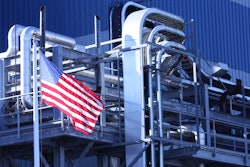With real-time machine data on the one hand and strict transactional business information on the other, manufacturers are beginning to see the value in integrating business software such as Enterprise Resource Planning (ERP) with control systems such as Supervisory Control and Data Acquisition (SCADA). However, sitting in between these are specialist Manufacturing Execution Systems (MES), which often do the same job as these supporting solutions, acting as an unnecessary middleman.
Most mid-level and senior manufacturing managers understand and appreciate the crucial role of Enterprise Resource Planning (ERP) software. However, at a high-level, Manufacturing Execution Systems (MES) — as an intermediary technology between process automation equipment on the plant floor and ERP software — is a much harder process to define, and as a result, is under review by many manufacturing decision-makers. Here’s why.
New learning required
Common definitions of MES suggest that it tracks and documents the transformation of raw materials into finished goods, providing information to help business decision-makers understand real-time conditions in their plant. It helps organizations optimize plant processes and enables control of inputs, personnel, machines and support services.
Lines blurring
The problem is, most of these needs can be satisfied by modern ERP software. ERP functionality provides deep traceability for inputs through inventory- and non-inventory quality management tools. Personnel are managed through human resources functionality, while support services from outside the organization are handled through embedded contract management tools.
Documents relevant to these various disciplines are handled by native document management functionality that enables any document — be it a material test report or a personnel training record —to be attached to work orders, shop orders, customer orders or production recipes to virtually any object across the application.
On the other hand, documentation in an MES refers more to detailed transaction logs than the actual documents covered in a ERP document management. This delivers the core of MES as part of a unified ERP product rather than through a point-to-point integration.
MES stuck in the middle
MES serves as a middle tier between ERP and equipment fitted with Programmable Logic Controllers (PLCs), which poses a challenge on several fronts. One problem is other systems that reside close to the equipment assets often already fill this role already. From my experience, most industrial settings that would truly benefit from MES already have a SCADA system, which performs several of the same functions – including high-level process control of automated equipment and the collection of real-time data on the operation of equipment.
Also, unless MES is provided directly by the equipment manufacturer, it can be more of a consulting and integration project than a defined software solution. The majority of cost involved in many MES products is in fact services rather than software. In some cases, the equipment manufacturer may require operators to buy additional specialized modules to make data accessible to external systems — modules which can again overlap with common MES platforms.
Even when it comes to acting as that middle tier between ERP and productive assets, MES will not necessarily do a better job than any other competing discovery tool, simply because SCADA, MES and other systems speak an entirely different language than ERP. MES will record equipment status every millisecond or so, while ERP will typically need to capture defined data points at the end of each batch or production run.
The information relevant for ERP is a small subset of all information normally collected in the MES. So, while MES collects machine data in a continuous stream, ERP collects machine information in an aggregated fashion in the form of inputs, outputs, material transactions and machines times. When it comes to data flowing from MES to ERP, some type of application will still be required to parse data before it reaches ERP, separating the masses of irrelevant data from the critical few.
ERP: cut out the middleman and keep control
There are two well-defined methods of monitoring and controlling real-time conditions, either on the plant floor or across a portfolio of distributed assets and software systems. Firstly, when data points shared between sensored assets and supporting ERP applications are well-defined, it is relatively simple to integrate ERP data directly with dashboards containing key KPIs.
Secondly, when dealing with data collected via IoT-enabled equipment, an IoT discovery platform can be paired with enterprise IoT connectors to process or analyze data before it is sent into the ERP solution.
Neither of these approaches is duplicated with existing plant or factory automation systems you may have implemented in your company. In the few cases where MES may still be desirable, then plant managers may look to industry-specific MES or those available from specific equipment manufacturer. This will help reduce the consulting and professional services component of manufacturing projects while reduce uncertainty or project risk.
Jakob Björklund is Global Director for Process Industries at IFS.























